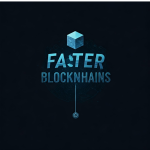
title

What is Sharding? The Future of Blockchain Scalability Explained
Hey there, **crypto enthusiasts!** Have you ever wondered how **blockchains** can get faster and handle more transactions without breaking a sweat? If so, you’re not alone. The answer lies in a concept that’s gaining traction in the crypto world: **sharding**. But what exactly is sharding, and why is it important for the future of **blockchain technology**?
In simple terms, **sharding** is a method of dividing a blockchain into smaller sections known as **shards**. By distributing the workload across multiple shards, blockchains can process more transactions in less time, effectively increasing the network’s efficiency and scalability. Think of it as dividing a huge task into smaller, manageable pieces that can be worked on simultaneously. This concept allows for **parallel processing**, which significantly reduces **bottlenecks** and enhances **network performance**.
Now, let’s dive deeper into the world of **sharding** and explore why this innovation is such a game-changer for the blockchain ecosystem.
1. The Growing Pains of Traditional Blockchains
Before we explore the mechanics of sharding, it’s crucial to understand why blockchain networks are facing scalability challenges in the first place. Traditional blockchains like **Bitcoin** and **Ethereum** operate in a linear manner. Each transaction has to be validated by the entire network, and as more users and transactions are added, the system slows down.
This is a fundamental limitation of **non-sharded blockchains**—the more data they have to process, the slower they become. Over time, this has led to issues like **higher transaction fees** and **network congestion**, both of which limit the broader adoption of blockchain technology.
2. How Sharding Works: Breaking Down the Concept
In a **sharded blockchain**, the network is split into smaller partitions known as **shards**. Each shard acts as its own mini-blockchain and can process transactions independently. This allows multiple shards to work on different sets of transactions simultaneously, increasing the overall throughput of the system.
To put it simply, imagine you have a long line of people waiting at one checkout counter. If you open 10 more checkout counters (shards), you can process 10 times as many customers (transactions) at once, significantly speeding up the entire process. This is what makes sharding so powerful—it enables **parallel transaction processing** that wouldn’t be possible on a single-threaded blockchain.
3. The Key Benefits of Sharding
So why is sharding such a **big deal** in the world of blockchain? Let’s break down the major benefits:
3.1 Scalability
The most obvious benefit of sharding is that it improves the scalability of blockchain networks. In theory, a well-implemented sharding system could allow a blockchain to scale infinitely. Unlike traditional systems where adding more users slows things down, sharding allows the network to **expand** without sacrificing **performance**.
3.2 Security
**Sharding** also enhances the **security** of blockchain networks. In traditional blockchains, a malicious actor can take over the network by gaining control of 51% of the system’s computational power. In a **sharded system**, however, attackers would need to compromise multiple shards simultaneously to launch a successful attack, making the network much more resilient to hacks.3.3 Reduced Transaction Fees
3.3 Reduced Transaction Fees
As blockchain networks grow and become congested, transaction fees tend to increase. By using sharding to improve network efficiency and throughput, fees can be kept lower because more transactions can be processed in a shorter amount of time.
3.4 Energy Efficiency
Another major advantage is the **potential energy savings**. Many blockchain networks, such as **Bitcoin**, have been criticized for their high energy consumption. Sharding can alleviate this by optimizing the network’s operations, allowing it to process more transactions with the same amount of computational resources.
4. Sharding and Ethereum: A Look at the Future
One of the most prominent examples of a blockchain network that’s planning to implement sharding is **Ethereum**. Ethereum’s developers have long recognized the limitations of the current system and are working on a series of upgrades known as **Ethereum 2.0**, with sharding being a key component.
4.1 Ethereum 2.0 and Sharding
**Ethereum 2.0** aims to completely overhaul how Ethereum works, with the goal of improving scalability, security, and sustainability. By introducing sharding, Ethereum will split its network into 64 smaller shards, each capable of processing its own transactions and smart contracts. This upgrade, expected to fully roll out by **2025**, could increase the network’s capacity to handle **thousands** of transactions per second.
4.2 Why Ethereum’s Sharding is a Game-Changer
Once Ethereum fully implements sharding, it could set a new standard for blockchain performance. This would open up the door for decentralized applications (dApps) and **DeFi** platforms to grow exponentially, without being constrained by the current limitations of Ethereum’s **Proof of Work** consensus mechanism. With **Proof of Stake** (PoS) already being phased in, the combination of sharding and PoS could make Ethereum one of the fastest and most secure blockchain networks in existence.
5. Challenges of Implementing Sharding
While the benefits of sharding are clear, it’s important to note that implementing sharding on a blockchain isn’t without its challenges.
5.1 Complexity
Sharding introduces a significant amount of complexity into the system. It requires careful coordination between shards to ensure that data remains consistent and that no single shard becomes a bottleneck. Achieving this balance can be difficult, particularly for larger, decentralized networks.
5.2 Cross-Shard Communication
One of the trickiest aspects of sharding is **cross-shard communication**—the process by which different shards share information. If cross-shard communication is inefficient, it can introduce delays and reduce the performance gains achieved through sharding. Developers need to find ways to ensure smooth, fast communication between shards without compromising the security or integrity of the network.
5.3 Security Risks
While sharding improves security in some ways, it also introduces new vulnerabilities. For example, if one shard is significantly weaker than others, it could become a target for attackers. This means that maintaining balanced security across all shards is critical.
6. The Future of Sharding in Blockchain
As the blockchain space continues to grow, sharding will likely play an increasingly important role in ensuring that networks can meet the demands of global usage. Several other blockchain projects, including **Polkadot** and **Zilliqa**, are also exploring sharding as a way to enhance scalability.
6.1 Potential Use Cases Beyond Cryptocurrencies
Although sharding is often discussed in the context of cryptocurrencies, its potential applications extend far beyond that. Sharding could be used to scale any **decentralized network**, including supply chain systems, **Internet of Things (IoT)** platforms, and even healthcare data systems. The flexibility and scalability offered by sharding could revolutionize how we store and process data across a wide range of industries.
7. Sharding vs. Other Scaling Solutions
It’s worth noting that sharding is just one of many potential solutions to blockchain scalability issues. Other approaches, like **layer 2 solutions** (e.g., **rollups** and **sidechains**) and improved consensus algorithms, are also being explored. However, the key advantage of sharding is that it improves scalability **at the protocol level**, meaning it’s baked into the blockchain’s core design rather than relying on external solutions.
Conclusion
In conclusion, **sharding** is poised to become a critical tool for addressing blockchain’s scalability challenges. By dividing the network into smaller, independent shards, blockchains can process more transactions simultaneously, improving performance, reducing fees, and enhancing security. As **Ethereum** and other blockchain projects continue to explore and implement sharding, we’re likely to see a new era of fast, secure, and scalable blockchain networks that can meet the growing demands of users and developers alike.
So, crypto enthusiasts, keep an eye on this space—sharding might just be the key to unlocking the full potential of blockchain technology!
Ready to join the Musk Empire? Believe in the project? 🤔 Join now







 Bengali
Bengali Chinese (Simplified)
Chinese (Simplified) English
English Hindi
Hindi Indonesian
Indonesian Irish
Irish Spanish
Spanish Swedish
Swedish Turkish
Turkish